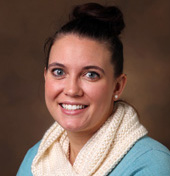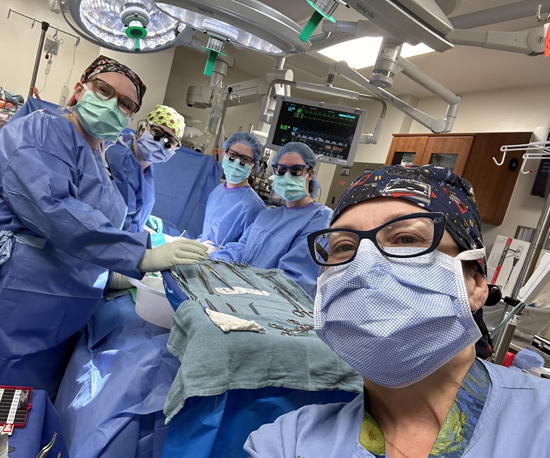Lindsay Ramsey Smith, MSN, R.N., a quality consultant for the Vanderbilt Transplant Center (VTC), recently uncovered some interesting data that sparked a center-wide improvement project.

Every year the center reports all malignancies to the United Network for Organ Sharing (UNOS). During one of the reporting cycles, Smith noticed that a large portion of Vanderbilt patients were developing skin malignancies much earlier than reported in the literature.
“Skin cancer is the most commonly diagnosed malignancy for solid organ recipients,” she said. “Because of the medications our patients must take to prevent rejection, their immune systems are suppressed, which weakens the body’s ability to fight against cancer.
“But what was interesting was that it was happening less than two years post transplant. The literature reported that skin cancer occurrence was typically seen five-10 years post transplant.”
The findings led to a more in-depth look at patient education and documentation.
“I went through the charts to see how many of our patients were following through with the recommendation for dermatology visits,” said Smith. “There was very low documentation, so it was difficult to tell whether the patient followed up or whether it was just not charted.”
In an effort to provide the best care to patients, Smith mapped out a process to increase prevention education and early identification of skin cancer, which is curable if caught early.
“This is the first transplant center-wide process improvement project,” she said. “Our goal is to standardize education, improve the documentation of patient education and create an annual newsletter for patients to follow up with dermatology.
“We are hoping with better education we will be able to see an increase in early skin cancer identification in our patient population.”
Prevention education was not standardized across the various transplant programs, with variation in content and frequency, Smith said.
Typically patients are told about the incidence of malignancies during the pre-transplant process, but Smith found that providing patients more in-depth teaching about the probability of skin cancer diagnosis post transplant was more effective.
“Patients are feeling better post transplant and are more receptive to important education on healthy living,” she said. “It offers a great teaching opportunity.”
VTC plans to roll out the new education module in February.
Posters publicizing the importance of annual visits and skin cancer prevention tips went on display this week in all post transplant clinics.
“We’re excited about the changes,” Smith said. “We presented this information at a quality conference to rave reviews. We all want to improve the quality of life of our patients, and this is a simple change that can make a big difference.”














